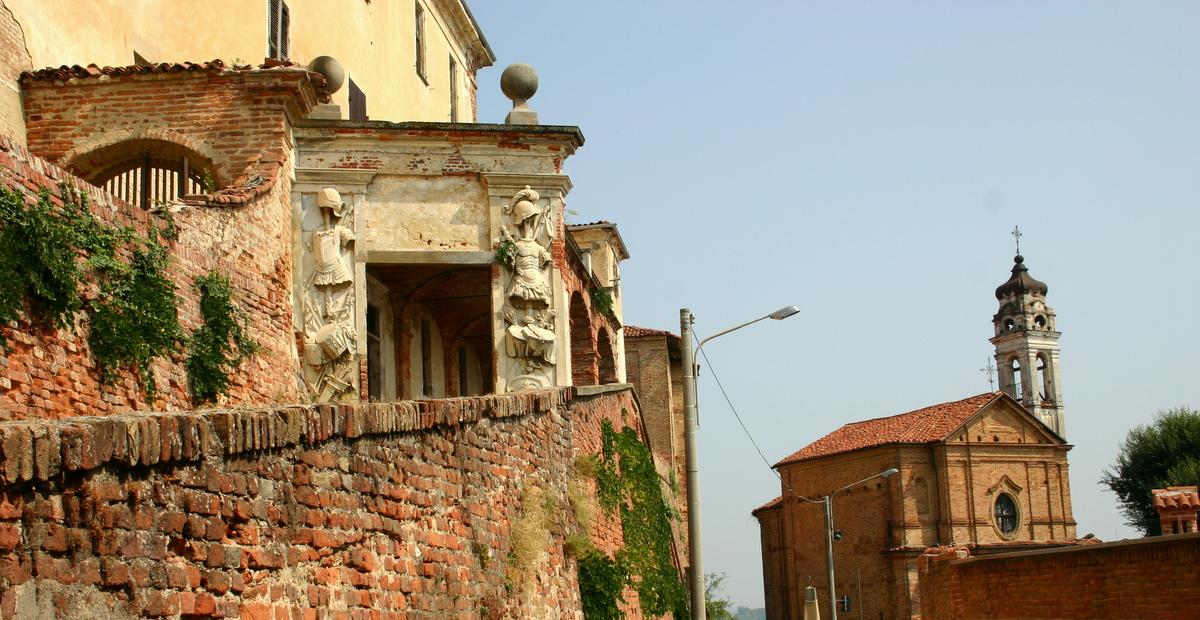POCAPAGLIA
POCAPAGLIA – HISTORY
Its beautiful position on the hills at the limits of the plain of Tanaro stands at the origin of a continuity of witnesses which begin from the prehistory and extend themselves in the Roman period because of the neighborhood to the Roman city of Pollenzo. The first written documents were linked to the priory of S. Giorgio and to the possessions in loco of abbeys of Nonantola and of Breme, whereas the appearance of a new feudal class – the “domini di Paucapalea”(“Lords of Paucapalea”) – is located along the 12th century. These last ones, within an almost plebiscitary territory formed by lands around Alba, in 1197 were unified to the Municipality of Alba. Thanks to the modification of alliances, the “de Paucapalea” family approached to Asti; the years from 1217 to 1222 experience these lords fighting against Bra, Sommariva Perno, Montaldo Roero and Testona. After 1250 in the fief of Pocapaglia entered the “de Coconato” family for a part and they keep it until about 1330, whereas another part is sold to the Lords of Sommariva Perno in 1270. The Falletti family appears in the fief in 1304, completing the acquisition soon after 1332. This is the century of their power: as allies of Acaia during the war against the Marquisate of Saluzzo, in the spring of 1342 they sequestered in the castle of Pocapaglia the Marquese Tommaso II. In 1346 they defeated the De Brayda family and the Provençals around the bell tower of Pollenzo. Their changing politics brings them in 1407 to be side-by-side with the Marqueses of Monferrato, with consequent retaliations by Acaia and Savoia. This is the beginning of the decline of Falletti: the fief is divided many times and begin the alienations against foreign people. The same antagonisms in the family bring Giovanni Antonio Falletti to donate in 1534 the sixth part of the fief to the Marquese of Saluzzo. During the same year, the village is assaulted by the troops of Francesco Bollero, captain under France orders, upon request of the Marquese. The inhabited was again ransacked on June 23rd, 1706 for four days due to the French troops of La Feuillade which were settled in Bra, along with abuses against the inhabitants and the devastation of the castle. The Falletti family finished in 1784; in the fief arrived the Caissotti family of Chiusano from which the fiefs were abolished and the property passed to the counts Charrost Borré de la Chavanne.
POINTS OF INTEREST AND CURIOSITY
THE ROCCHE
An unusual geological phenomenon due to the erosion which dated back to time immemorial but still continues nowadays and influences the life of man. In Pocapaglia, the Rocche are the most typical landscape element: wild and structured as a labyrinth, with an origin always linked more to the myth than to the science. The myth describes the phenomenon as the fascinating event of “catching of Tanaro”. A naturalistic heritage which can be discovered thanks to the Trails Network of Roero: ring routes which deepen the themes of the local cultural identity.
THE CASTLE
Result of multiple restorations and additions, is mentioned for the first time in 1197, period characterized by the frightful stronghold of “domini de Paucapalea”, from two sides overhanging on the rocks. The Falletti family restored it toward the half of that century. In 1534 Giovanni Antonio Falletti gave a part of it to the Marquese of Saluzzo and, probably, this is the period in which the magnificent portal was embellished: it is formed by two big door frames of high artistic interest for the high-reliefs with themes linked to the war, similar to the ones which adorn the façade of Palazzo Madama in Turin and because of a wrong tradition were attributed to the Sansovino.
THE CHURCHES
- Saints Giorgio and Donato: the actual parish positioned as guard to the main square. It was built between 1663 and 1666 in the site where stood the preexisting Church of S. Giorgio. It was restored at the beginning of '800 and consecrated again in 1804. Within it there are fine painted canvas and paintings; the vault and the sails are totally frescoed. It is also remarkable the wooden choir, finely inlaid and the baptistery.
- The Church of S. Agostino, positioned under the castle, was built by disciplinants between 1742 and 1749, according to an initial project of the Count Carlo Giacinto Roero, inspired to the lines of the Piedmont Baroque; the inside houses two painting of wide size depicting “The Last Supper” and the event of the “Washing of the Feet”.
- Behind the cemetery, in a dominant and oriented position but even more degraded, there is the Church of S. Giusto, rebuilt from 1762 to 1769 under the direction of master Carlo Traversa, decorated some years later with stuccos made by Barelli; the bell tower was built from 1788 to 1791.On a modest hill facing the Tanaro valley remains the Romanic apse of S. Giorgio, remainder of a reconstruction of the Church in the first half of XII century.





